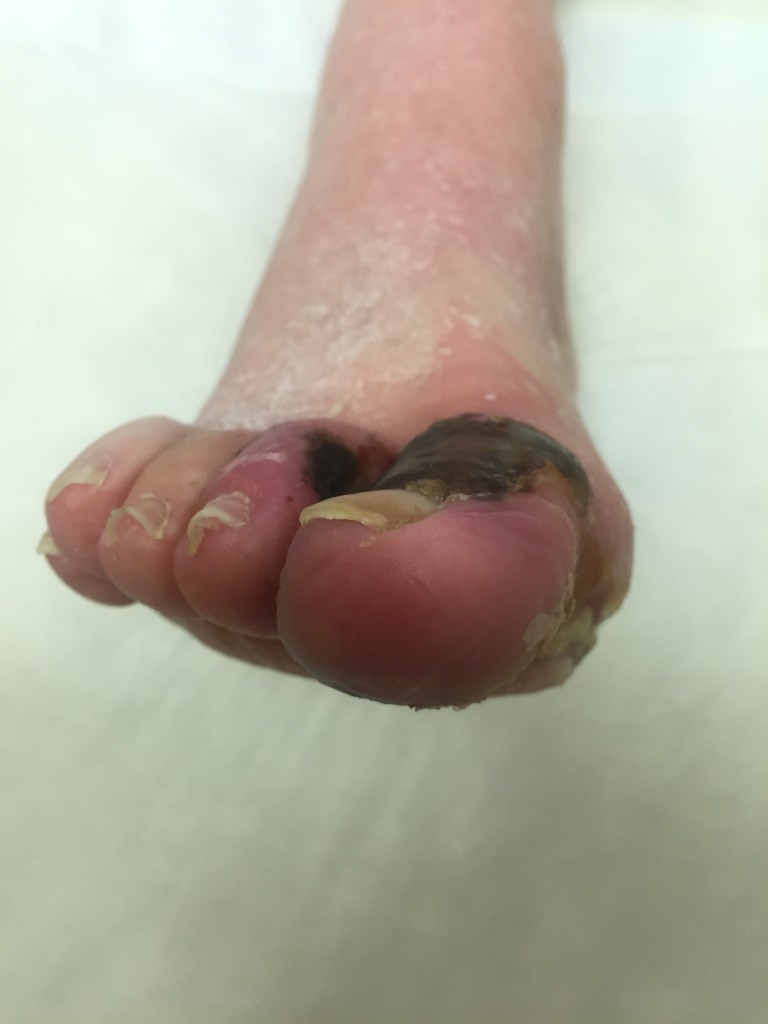Peripheral Arterial Disease (PAD) occurs with atherosclerosis affects the arteries bringing blood to the legs (and sometimes the arms) causing them become narrowed and eventually blocked completely. Most patients will peripheral arterial disease are asymptomatic.
Intermittent claudication: This term refers to pain in the legs (usually the calf muscles) which is brought on by exercise and relieved by rest and which is caused by PAD. This is usually the first symptom of PAD. Intervention may be required, but risk factor modification, medication and exercise training is the first line treatment.
Rest Pain: In some patients with PAD, intermittent claudication will proceed to rest pain. This is pain occurring at rest, caused by inadequate blood supply to the legs and feet. Urgent intervention is usually required as these patients are at risk of gangrene. In these patients even minor trauma to the skin can result in ulceration that will not heal.
Gangrene and Tissue Loss: The most severe manifestation of peripheral arterial disease is black discolouration of the skin which can progress to infection which can spread rapidly (Figure). Urgent treatment is required. Fortunately only a very small percentage of patients with PAD progress to this stage or require amputation.

